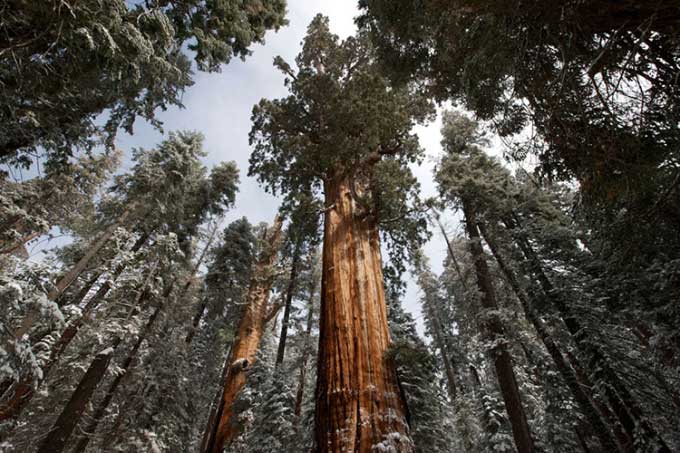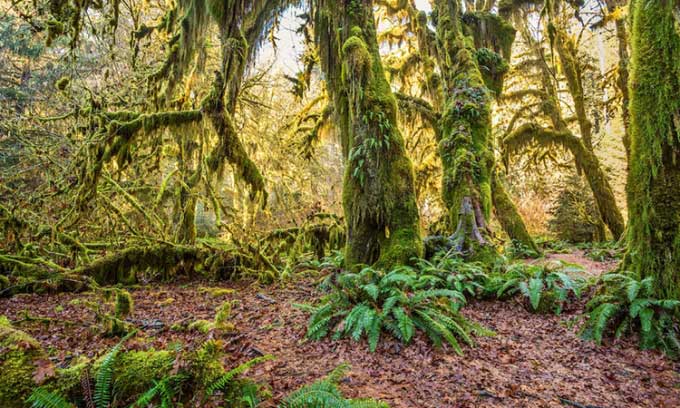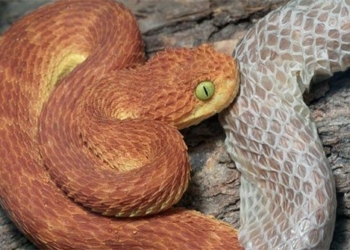Old-growth forests are both ecological hotspots and vital sources of clean water for humanity, serving as significant carbon sinks to combat climate change.
Not only do these ancient forests connect us to our past, but they also perform remarkable ecological feats, even as they face new threats from climate change and human activities.

Giant sequoias in an old-growth forest in California. (Photo: National Geographic).
Old-growth forests store significantly more carbon than younger forests, helping protect us from greenhouse gas emissions from fossil fuels. A study of six national forests in Oregon, USA, revealed that just 3% of the largest trees account for up to 42% of the forest’s carbon.
In areas with high carbon reserves, the flora and fauna tend to be richer than in other regions. For instance, in the Hoh River Basin, researchers found seedlings growing from the branches when they climbed to the canopy. Old-growth forest expert Beverly Law from Oregon State University noted that the upper canopy hosts a unique ecosystem filled with various mosses, lichens, insects, and birds. “There is another world up there,” Law emphasized.
Old-growth forests support a greater diversity of life and store a complex communication network among organisms. They provide shade for sensitive species below, especially those that need time to migrate and adapt to changing environments. Large trees create essential habitat structures for both terrestrial and aquatic life.

Moss and lichen cover tree trunks in the Hoh Rainforest in Washington. (Photo: National Geographic).
Scientists note that old-growth forests store and gradually release clean water for millions of Americans while mitigating the impacts of flooding as weather patterns become increasingly erratic and severe. Ultimately, the majestic and pristine beauty of ancient forests attracts tourists and inspires economic and recreational activities, particularly in rural areas.
There is no specific timeline to define an old-growth forest, as it depends on the ecosystem. Bristlecone pines can live for over 5,000 years, while some other tree species may only live for 150 years but are still considered “old” if they exist in areas largely undisturbed by humans. What these forests have in common is a complex and ever-changing ecosystem that fosters symbiotic relationships among species.
“There is a great diversity of flora, fauna, and land in old-growth forests. Biodiversity—including genetic diversity and species diversity—is essential for resilience. It protects forests from pests and other threats. It is vital for life to continue,” Law added.




















































